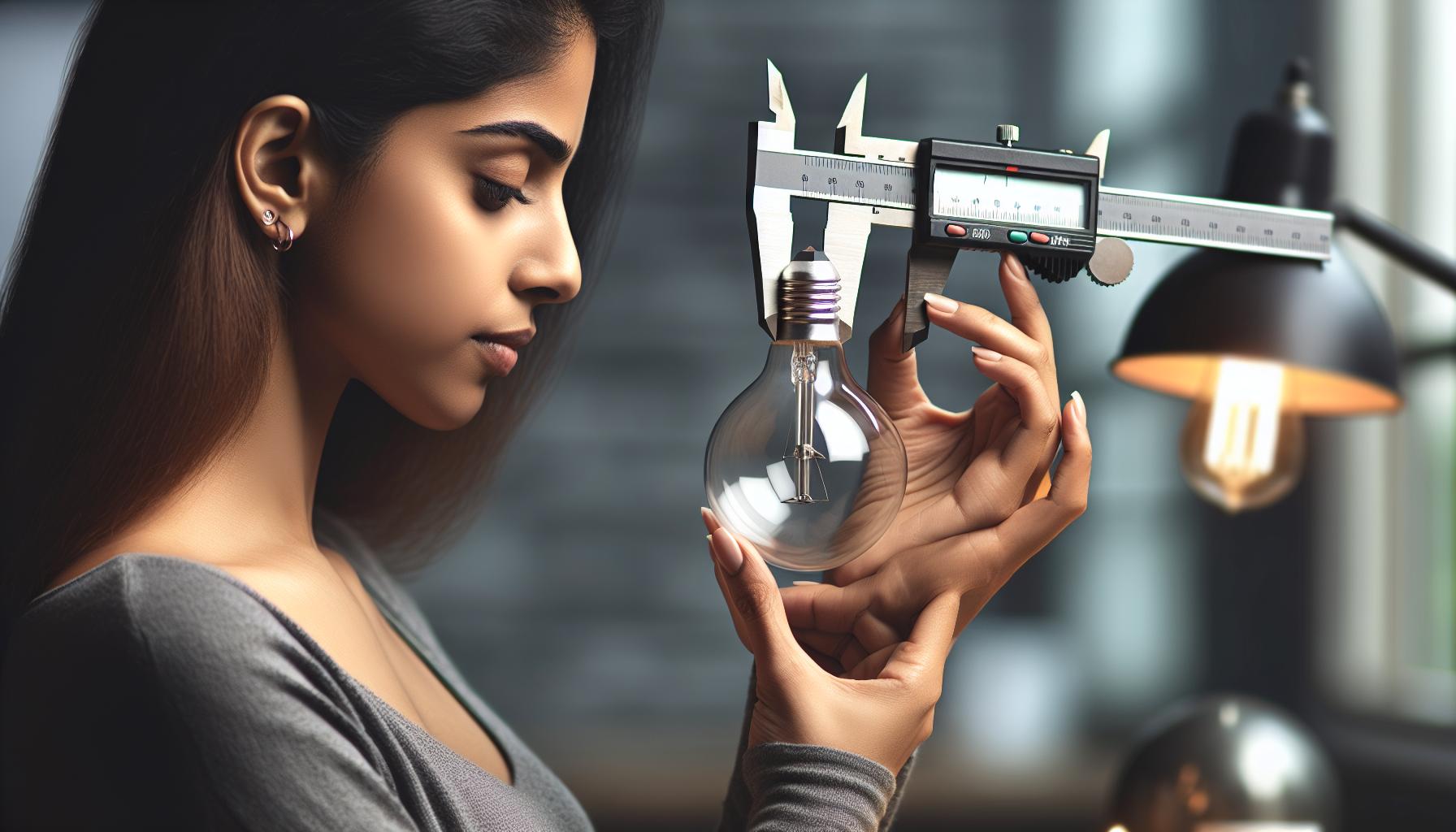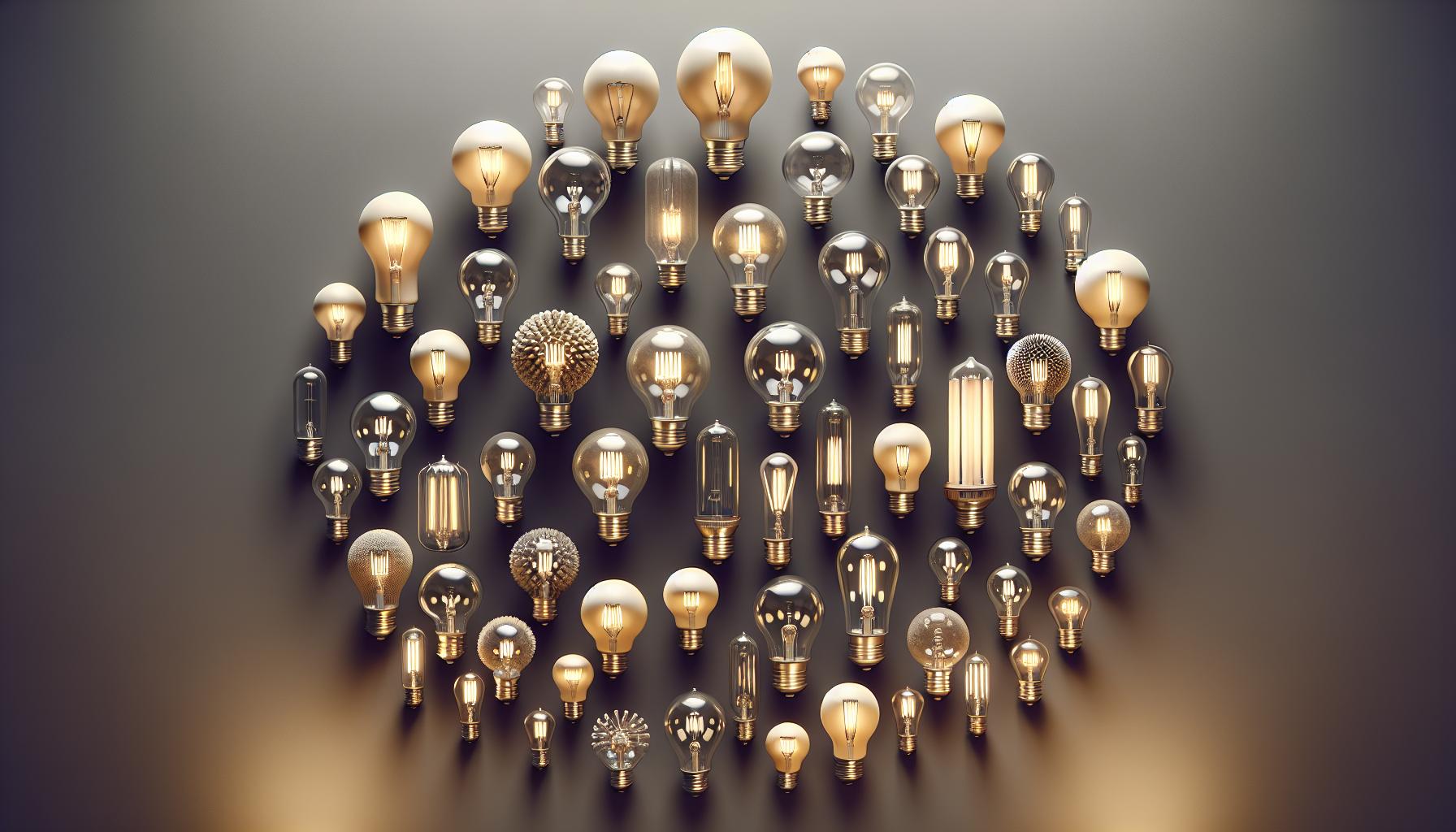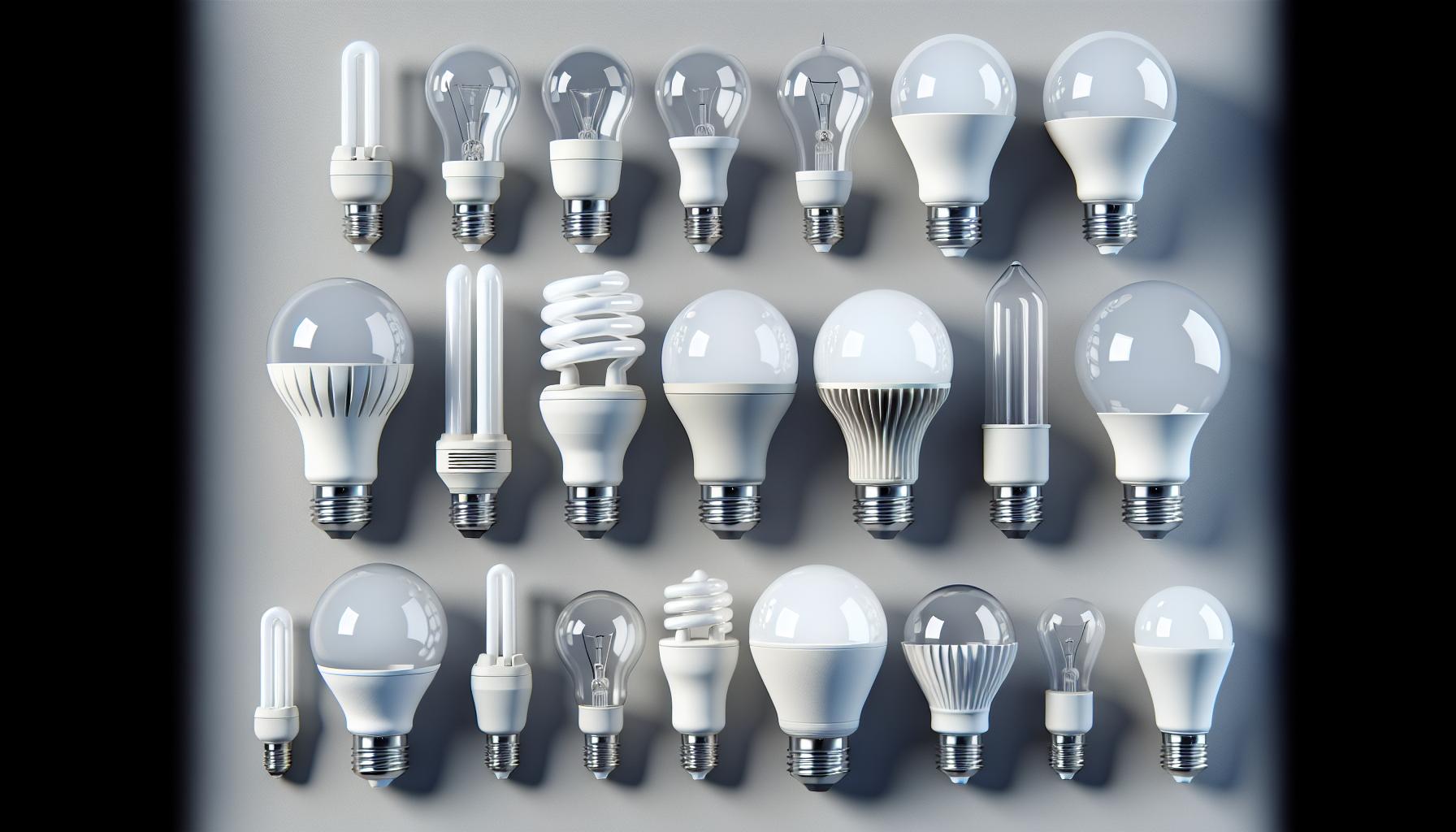Ever found yourself staring at the lighting aisle, overwhelmed by the choices? You’re not alone. Knowing the size of a standard light bulb is key to making the right pick for your lamp or fixture.
Let’s shed some light on the subject—literally. From the cozy corners of your living room to the bright spots in your workspace, the size of the bulb you choose can make all the difference.
Why knowing the size of a standard light bulb is important
If you’re an enthusiast for all things home DIY, you know firsthand that the devil’s in the detail. And when it comes to lighting, bulb size is a detail you can’t ignore. Understanding the dimensions of standard light bulbs is crucial since it influences everything from the aesthetics to the functionality of your space.
Firstly, the size of your light bulb determines whether it’ll fit into your desired lamp or fixture. There’s nothing worse than finding out the bulb is too large or too small after you’ve purchased it.
Secondly, it’s about luminosity; the size can affect the brightness and coverage of light in a room. A bulb that’s too small may not provide enough light, making a room feel dingy, while one that’s too large could overwhelm the space with too much brightness.
When you’re knee-deep in a home lighting project, always consider the proper fit and ambiance. Small bulbs can be perfect for creating a warm, intimate atmosphere, ideal for areas like bedroom side tables or cozy reading nooks. On the other hand, larger bulbs are often better suited for areas requiring bright, consistent lighting — think kitchen islands or home offices.
Lastly, bulb size can impact energy consumption. Larger bulbs tend to have higher wattages, drawing more power. If you’re aiming for a greener home, being mindful of size can help you manage energy usage more effectively.
In the vast world of DIY lighting projects, enjoying the process is just as important as the outcome. So when you’re next in the aisles of your favorite home improvement store, remember these tidbits on bulb size. They’ll ensure your efforts shine in the best light possible, both practically and aesthetically.
Understanding the different types of light bulbs
As you explore the wide world of illumination, you’ll find a dazzling array of light bulb types, each with unique features and specific uses. Delving into their characteristics can help you select the ideal bulb for any given setting.
First off, let’s talk about incandescent bulbs. These are the classic ones you might picture when someone says “light bulb”. They produce a warm, inviting light and have been a household staple for over a century. Despite their familiarity and excellent color rendering, they’re not as energy-efficient as their modern counterparts.
Next in line are the halogen bulbs. Think of these as the enhanced version of incandescents. They burn brighter and last longer while maintaining that cozy glow but they do run hotter and use more energy than some other options.
Cue the compact fluorescent lamps (CFLs). These spiral-shaped or tubed bulbs kick energy efficiency up a notch. They use about 70% less energy than incandescent bulbs and have a much longer lifespan. However, their light takes a moment to warm up to its full brightness and they contain a small amount of mercury, requiring special disposal.
LED bulbs are the current front-runners in efficiency. They’re the long-distance runners of light bulbs, with lifespans that can outlive incandescent bulbs by up to 25 times and save you a significant amount on your electricity bills. They come in a range of colors and brightness levels, but check the packaging for dimmability if that’s a feature you need.
« Do Light Bulbs Need to Be CSA Approved? Essential Safety Tips Revealed
What Light Bulbs Should I Use in My Bathroom? Find the Safest & Brightest Options »
Specialty bulbs are also part of the mix, designed for specific applications like oven lights, refrigerator bulbs, or plant growth lights. Each is engineered to withstand unique conditions or offer a particular kind of light.
Arming yourself with this knowledge, you’re well on your way to making an informed choice for your next DIY lighting project. Remember, the right bulb not only fits your lamp but also sets the mood, saves energy, and achieves the ideal brightness for your space. Keep in mind the size of the bulb–you’ve already learned why that matters–and you’ll illuminate your home like a pro.
How to measure the size of a light bulb
When you’re handling a DIY lighting project, knowing how to accurately measure your light bulbs can be as crucial as selecting the right type. Let’s run through the steps you need to take to measure a light bulb correctly.
First, you’ll want to familiarize yourself with the basic parts of a bulb. Essentially, there are two key dimensions: the diameter and the length. Diameter is the width of the bulb at its widest point, and length is the distance from the bottom of the base to the top of the bulb.
- Switch Off the power: Ensure your safety by turning off the power supply before removing the bulb.
- Remove the Bulb: Unscrew the bulb from the socket carefully.
- Measure the Diameter:
- Measure the Length:
- Determine the Shape:
- Note Any Special Features:
Common sizes of standard light bulbs
When you’re diving into the world of home lighting, you’ll quickly find that there is an array of bulb sizes to consider. Standard light bulbs, also known as A19 bulbs, have a diameter of approximately 2.375 inches (60 mm). But there’s more to explore beyond the A19 staple.
At the heart of every cozy living room or vibrant work area is often a classic A19 incandescent bulb, commonly used in residential settings for its warm and inviting glow. However, don’t be surprised if you come across other members of the A-family like the A15, which is slightly smaller, often seen in appliances and sometimes in smaller lamps.
- A19: 60 mm diameter
- A15: 48 mm diameter
You might be working on a project that requires a larger light source. That’s where the A21 comes in, delivering more lumens for a brighter space. The A21 is notably larger than the A19, measuring up to 2.625 inches (67 mm) in diameter, making it a considerable option for areas needing potent illumination.
- A21: 67 mm diameter
In contrast, for places with delicate lighting schemes, such as chandeliers or decorative fixtures, candelabra bulbs (E12) or globe bulbs (G series) might be more your style. They can range widely in size but typically hover around 1.5 inches (38 mm) in diameter for candelabra bulbs and up to 5 inches (127 mm) for the larger globe bulbs.
- E12 (Candelabra): 38 mm diameter
- G series (Globe): 80 – 127 mm diameter
Dive deeper into the specifics of each bulb type to see which aligns best with your lighting project vision. Remember that while diameter is important, the length and overall shape of the bulb are equally critical in ensuring the perfect fit and aesthetic for your space.
Be sure to consider the fixture you’re working with, as different styles can have unique requirements when it comes to bulb sizes. Larger fixtures may accommodate grander bulbs, while more intricate designs may call for something more petite. Keep in mind that sometimes the best light for a space isn’t always the largest or the brightest but the one that complements its surroundings seamlessly.
Factors to consider when choosing the right size light bulb
When diving into the world of lighting, you’ll find that size really does matter. Picking the correct bulb size isn’t just about it fitting into the socket; it’s about the bulb’s ability to evenly distribute light and create the ambiance you’re longing for.
Room Size and Bulb Wattage
First things first, consider the room you’re illuminating. A larger space will generally require a bulb with higher wattage for broader light distribution. However, remember that LED bulbs use less energy, so they can emit the same amount of light as an incandescent bulb but with far lower wattage.
- Small room (up to 10×10 feet): 15-25 watts LED (equivalent to 100 watts incandescent)
- Medium room (up to 15×15 feet): 25-35 watts LED (equivalent to 150 watts incandescent)
- Large room (over 15×15 feet): 35-45 watts LED (equivalent to 200 watts incandescent)
Bulb Shape and Base Type
After wattage, think about the bulb’s shape. An A19 bulb is versatile but might not suit a fixture designed for a slimmer, sleeker A15 bulb. Similarly, decorative fixtures might require a candelabra (E12) bulb for that touch of elegance.
Light Distribution and Brightness
You’ll also want to note how the bulb casts light. A bulb with a narrow beam angle might create a spotlight effect, which could be perfect over your kitchen island but not ideal for a cozy living room. Meanwhile, globe bulbs (G series) tend to diffuse light more softly, making them great for bathroom vanities or pendants.
Fixture Compatibility and Aesthetics
Finally, ensure the bulb is compatible with your light fixture. Not every bulb’s length and shape will look good or even fit in every lamp or ceiling fixture. Some fixtures are designed with a specific bulb size in mind, which can greatly influence the overall aesthetics of your space. Always check the fixture requirements, and when in doubt, bring the old bulb when shopping for a new one. It’s not just about the light; it’s also about how the bulb contributes to the visual appeal of the fixture itself.
Conclusion
Now that you’ve got the lowdown on light bulb sizes, you’re all set to brighten up your space just right. Remember, it’s not just about filling a socket; it’s about crafting the perfect glow for your room. So consider the size of your space and the wattage you’ll need. And don’t forget, LED bulbs are your go-to for energy efficiency without skimping on luminosity. With the right shape, base, and brightness, you’ll enhance not only the light quality but also the overall look of your fixture. Ready to flip the switch? Go ahead, illuminate your world with confidence!
Frequently Asked Questions
How do I choose the right size light bulb for my room?
Choose a bulb by considering the room size and the desired ambiance. Larger rooms often require higher wattage bulbs to distribute light evenly.
What is the significance of bulb wattage in selecting a light bulb?
Bulb wattage is important because it determines the light output. Higher wattage bulbs produce more light, which is suitable for larger spaces.
Can LED bulbs provide the same light as incandescent bulbs while using less energy?
Yes, LED bulbs are more energy-efficient and can emit the same amount of light as incandescent bulbs while using less energy.
What factors should I consider when choosing a light bulb besides size and wattage?
Consider the bulb’s shape, base type, light distribution, brightness, and whether it is compatible with your light fixture.
Why is it important to ensure the bulb is compatible with my light fixture?
Ensuring compatibility prevents potential electrical issues and ensures that the bulb contributes to the fixture’s overall visual appeal.





